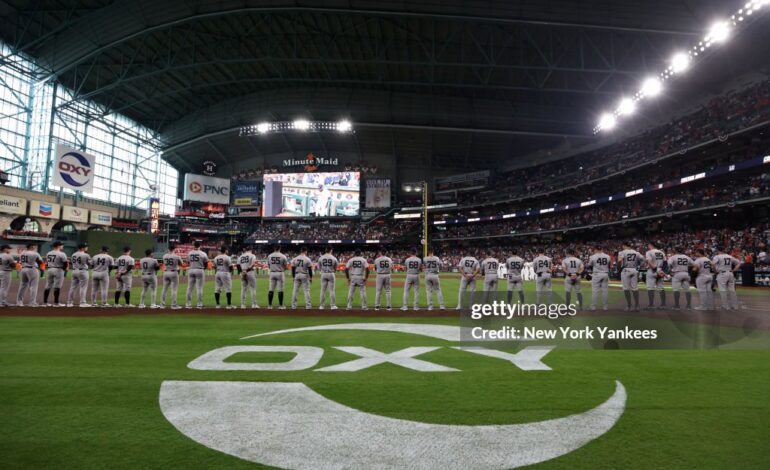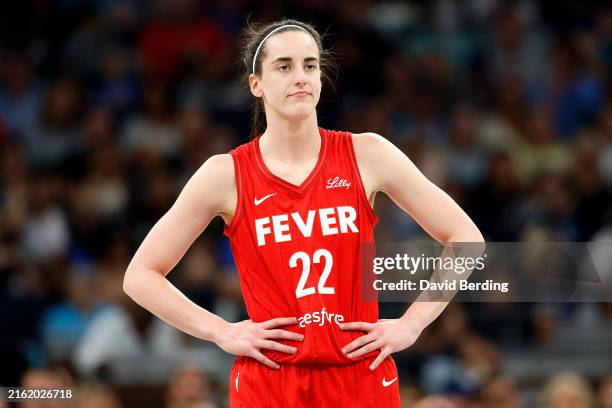Former Los Angeles Dodgers starter Walker Buehler is a Boston Red Sox. He’s likely the last significant addition to a rotation that’s now better and deeper than last year.
Buehler signed a one-year deal with Boston, essentially a Qualifying Offer but structured differently.
He will make $15 million in 2025 with a $3.05 million signing bonus. His deal includes a $25 million 2026 mutual option with a $3 million buyout.
Both parties rarely exercise mutual options, so a $3 million buyout will net Buehler at least $21.05 million.
Buehler will also get $500,000 if he makes 20 starts and $500,000 for every two starts after that, up to 28 starts.
The 30-year-old right-hander is betting on himself.
He and the Red Sox hope for a better 2025 from him after a terrible return from his second Tommy John surgery.
The 2025 Red Sox rotation is yet another risky rotation with a huge upside. But it’s 100 percent different this time.
No Boston starter has an extensive injury history. They’ve not added starters who hadn’t pitched well in years. And there are no reclamation projects with little to no MLB success.
Entering ’25, the Sox have seven MLB starter options on the 40-man roster, with three more options behind them.
Also, recent signee Patrick Sandoval should return from his internal brace procedure in the second half.
The Red Sox wanted a veteran starter with playoff experience. Walker fits that bill in spades.
Boston keeps its options open with this deal while improving for next season.
The Sox are just over $26 million below the first Competitive Balance Tax Threshold and still have multiple needs.
If Walker doesn’t bounce back next year, the Red Sox should have enough quality depth to survive.
Walker Buehler, Significant 2025 Red Sox Rotation Contributor?
A pitcher’s first season back from Tommy John surgery usually isn’t great.
Walker Buehler was no exception.
Over 16 starts (75.1 innings) in 2024, the Kentucky native had a 5.38 ERA/5.54 FIP/4.78 xERA. He struck out 18.6 percent of batters faced and walked 8 percent. Opposing hitters had a .289 average and .862 OPS against him.
The expected stats and advanced metrics weren’t any better.
Buehler’s signature pitches, the four-seam fastball and knuckle curve, weren’t good.
His average fastball velocity remained unchanged at 95 mph (65th percentile). However, hitters had a .342 average and a .696 slugging percentage against the pitch.
His Knuckle Curve (19 percent usage rate) had a .278 average and a .481 slugging percentage against it. However, it generated a 27 percent whiff rate and a 30 percent strikeout rate.
The cutter and sweeper, his next most used pitches in recent years, fared much better.
Walker also threw a sinker at the highest usage rate (16 percent) since 2018. That pitch, and his changeup, didn’t fare well.
Buehler didn’t make his 2024 debut until May 6th. He returned to the Injured List on June 19th with right hip inflammation. The righty wouldn’t return until August 14th, spending some time in Florida trying to find himself.
After returning from his hip injury, he made some changes, which seemed to make a difference.
In 26.1 innings in September, Buehler had a 4.44 ERA/4.99 FIP. He struck out 22 percent of batters faced, had a 22 percent whiff rate, and walked 9 percent. Batters hit .265 against him with a .787 OPS.
Then came the postseason.
The Vanderbilt alum had a 3.60 ERA/3.50 FIP with a 21 percent strikeout rate, 35.5 percent whiff rate, and 6.5 percent walk rate. He allowed a .214 average with a .589 OPS over 15 October innings.
Over his last nine starts of 2024, including the postseason, Walker Buehler’s fastball was good again.
Opposing batters hit .229 against it. The pitch generated a 13 percent strikeout rate, a 20 percent whiff rate, and a 7.5 percent walk rate. But hitters slugged .458 against it.
He used his fastball over 30 percent of the time in the playoffs.
His Knuckle Curve was good again, too.
It generated a .199 average, a .313 slugging percentage, a 32 percent whiff rate, a 35 percent strikeout rate, and a 6 percent walk rate.
Walker’s cutter was solid, and his sweeper was also good. But his sinker didn’t fare that well.
Expect the Sox and Andrew Bailey to tinker with Buehler’s pitch mix for 2025.
There’s reason to believe the former Dodger will bounce back.
If Walker Buehler is healthy and even 70 percent of what he was in 2021, that’s a win for both sides. He re-establishes his value, gets his payday, and the Red Sox get a draft pick via the Qualifying Offer.
Moreover, few starters on the market this winter have veteran leadership and extensive playoff experience.
The Red Sox rotation, not including Walker Buehler, has 11 combined playoff games between them.
Buehler has 19 playoff games by himself, pitching 94.2 innings with a 3.04 ERA/2.99 FIP. He’s struck out 114, walked 6, and has held batters to a .210 batting average.
Walker’s also succeeded against the American League East in a small sample size.
Boston’s 2025 Starting Staff Better, Deeper, but Questions Remain
Garrett Crochet is your number-one starter. Tanner Houck is pitching second. Walker Buehler is your third starter. Brayan Bello is pitching fourth. And Lucas Giolito and Kutter Crawford are your 5th and 6th starters.
Immediately behind those six are Cooper Criswell, Richard Fitts, and Quinn Priester.
And behind them are Patrick Sandoval and Hunter Dobbins.
That’s a much deeper rotation with a much higher upside than we’ve seen recently.
It’s a rotation with a higher floor, too, but that’s still not without its questions.
Buehler was Clayton Kershaw‘s apparent successor the last time he was healthy.
From 2019-2021, he had a 2.89 ERA/3.20 FIP. He held opponents to a .208 average and .609 OPS.
Can Walker carry over his 2024 postseason or even be 70 percent of his old self? Will he be a Nathan Eovaldi, who also had two Tommy John’s and is still successful?
If Buehler is healthy, the more likely-than-not answer to these questions is “yes.”
Garrett Crochet’s stock is rising after dominating his first full season back from Tommy John surgery.
Crochet had a 3.58 ERA/2.69 FIP/2.85 xERA. He led MLB in both strikeout rate (35.1 percent) and whiff rate (33.1 percent)
With only 146 innings last year, we can’t expect Garrett to be a true number one yet. Even if Crochet gets close to what he did in 2024, can he sustain it over 180 innings?
Lucas Giolito was one of the most durable starters from 2018-2023. He couldn’t even escape MLB’s pitching injury epidemic.
Giolito was roughly on par with his 2018-2021 averages to start 2023.
Over his first 121 innings of ’23, Giolito had a 3.79 ERA/4.43 FIP. Opponents hit .232 with a .734 OPS, a 26 percent strikeout rate, and a 9 percent walk rate.
Things went south for Lucas during the All-Star Break, as his now ex-wife filed for divorce.
Life—not just a performance decline—likely contributed to his second-half struggles.
He finished 2023 with a 4.88 ERA/5.27 FIP/4.61 xERA over 33 starts (184.1 innings).
Having missed ’24, Giolito’s unlikely to surpass 150 innings in 2025. He can be ’25’s Rick Porcello if he posts, even with reduced innings.
Tanner Houck and Kutter Crawford showed everyone that they are legitimate MLB starters.
Houck made 30 starts (178.2 innings), pitching to a 3.12 ERA/3.32 FIP/4.11 xERA. Opponents had a .765 OPS when facing him a third time.
Crawford made 33 starts (183.2 innings), pitching to a 4.36 ERA/4.65 FIP/3.86 xERA. Opponents hit just .223 against him with a .702 OPS. They also hit an MLB-leading 34 home runs.
It’s always possible, however unlikely, that either Houck (3.80 ERA/4.45 FIP) or Crawford (5.22 ERA/5.31 FIP) will be as bad in ’25 as they finished ’24.
But can they replicate how they began last season? At worst, Crawford is a more apt comparison to Porcello for next year. Will he get the chance?
Brayan Bello has all the talent in the world but hasn’t been able to put it all together. Bello has yet to have an ERA under 4 in two-plus MLB seasons.
Things couldn’t have been worse for Bello through his first 14 starts.
He had a 5.55 ERA/4.85 FIP, and opponents hit .270 off him with a .800 OPS.
Brayan found something in July, though.
He had a 3.66 ERA/3.67 FIP over his last 16 starts. Opponents had a .238 average against Bello with a .662 OPS.
Can Bello carry that late-season success over to 2025 and finally put everything together?
Walker Buehler Joins Clearer 2025 Red Sox Rotation Picture
The Red Sox rotation entering 2024 was in a different position than now.
Boston went in with Crawford, Nick Pivetta, and Bello locked in as starters.
The Sox hinged their hopes on Bello taking a leap forward and Pivetta carrying over his stellar ending to ’23.
Giolito’s injury allowed unknown Houck and the experiment that was Garrett Whitlock to start.
Cooper Criswell, a reclamation project at the time, was the odd man out.
The Red Sox had nobody MLB-ready behind Criswell.
When Whitlock, Pivetta, and Bello got hurt around the same time, it was “Here we go again.”
The team recalled Criswell (12 career MLB appearances with a 5.97 ERA/4.94 FIP). He did admirably under the circumstances.
Josh Winckowski was converted to a starter on the fly, which didn’t last long. He eventually became a multi-inning reliever.
The Red Sox had to use Openers/bullpen games again—not nearly as many as they used in 2023, but still more than they should have.
Because they had no depth, Craig Breslow acquired James Paxton at the trade deadline. That lasted all of three starts.
In September, Richard Fitts got hit first “cup of coffee” (1.74 ERA/3.31 FIP/4.31 xERA).
Deadline acquisition Quinn Priester (5 innings, one run against the Rays) started game 162.
Heading into 2025, we know what we can expect of Houck and Crawford.
Walker Buehler essentially replaces Pivetta in the Red Sox rotation.
Giolito (and later Sandoval) helps replace Paxton, Winckowski, and those bullpen games.
And they have Garrett Crochet!
Criswell (4.08 ERA/4.15 FIP/4.31 xERA) showed he’s capable when an injury arises.
Fitts, still untested, finished 2024 well before his call-up.
In his last 7 Triple-A starts, Fitts had a 2.54 ERA with five walks and 39 strikeouts in 39 innings pitched. Opponents hit .214 of him with a .617 OPS.
After being traded from the Pirates to the Red Sox, Priester made significant strides, particularly with his velocity. That progress led to a positive ending to his 2024 season.
Over his final four starts (18.1 innings) with Worcester, Priester had a 2.45 ERA with five walks and 24 strikeouts. He held opponents to a .197 average and .508 OPS.
Of all of them, Patrick Sandoval (2019 MLB debut) is probably the most injury-prone.
A stress fracture in his left lumbar spine limited his 2021 season to 17 games.
Over 87 innings in ’21, Sandoval posted a 3.62 ERA/4.03 FIP/3.55 xERA. He had a 26 percent strikeout rate and a 10 percent walk rate. Opponents hit just .215 with a .649 OPS.
The underlying metrics backed those results.
Finally healthy in ’22, Sandoval had a 2.91 ERA/3.09 FIP/3.91 xERA in 27 starts (148.2 innings). He struck out 24 percent of batters faced and walked 9 percent. Opponents hit .246 against him with a .665 OPS.
The 28-year-old left-hander took a step back in ’23.
Over 144.2 innings (28 starts), the California native had a 4.11 ERA/4.18 FIP/4.70 xERA. He struck out 19.6 percent of batters and walked 11 percent. Opponents hit .256 of him with a .718 OPS.
Sandoval didn’t get the same swing and miss he got in ’21-22. He did, however, still limit hard contact like he had before.
His elbow injury limited him to 16 starts in 2024.
Lastly, Hunter Dobbins, added to the Sox 40-man roster this winter, is behind all of them.
Over 25 starts (125.2 innings) last season between Portland and Worcester, Dobbins posted a 3.08 ERA. He walked 48 batters and struck out 120.
The 2025 Red Sox rotation isn’t in “if everything goes right, they can compete with this rotation” territory anymore. They competed with what they had last year. And what they have now is better and deeper. With the depth Boston has for next season, it will take a lot to get the Sox back into 2022-23 territory.
Buehler Deal Gives Red Sox Flexibility, Keeps Their Options Open
What do the Red Sox do with all these starters?
Boston can go with a six-man rotation — at least periodically.
With a six-man rotation, they’ll have one less reliever on the roster. On a strategic, periodic basis, that shouldn’t be an issue. They can use some of their rotation depth arms as multi-innings relievers.
It makes sense to use six starters strategically to manage Crochet, Buehler, and Giolito’s workloads.
If they or anyone else were to tire in the later stages next year, Patrick Sandoval should also be ready to help.
Or the Red Sox can package Crawford for a current need.
Alternatively, the Sox can keep their starting pitching depth and sign the players they need.
Boston is currently just under $27 million below the first CBT threshold. If the Sox signed Corbin Burnes to a $35 million Average Annual Value, they would be just under $14 million below the first CBT.
By signing Walker Buehler instead of Burnes or Jack Flaherty, the Red Sox can get a better-fitting rotation anchor next offseason.
They are projected to be over $100 million below the first CBT next winter (barring signings/extensions) with multiple needs then, too.
Buehler, Giolito, Aroldis Chapman, Justin Wilson, Liam Hendricks (’26 mutual option), and Rob Refsnyder will all be free agents.
And unless the Red Sox get one now, they’ll need to acquire a starting-caliber catcher.
If Rafael Devers moves off third base or the Red Sox trade Masataka Yoshida, Boston’ll need another bat.
Plus, who knows what needs might arise throughout 2025.
We all wanted that big-name, big-money rotation anchor this winter. However, signing Walker Buehler helps elevate the Red Sox 2025 rotation while keeping their flexibility for now and 2026.
Call me crazy, but that’s not a bad strategy.
Featured Image Credit: Daniel Shirey/Getty Images
For daily Red Sox coverage, follow me on Twitter. For more MLB coverage, follow @BellyUpBaseball and check out Belly Up Sport’s other MLB content.






